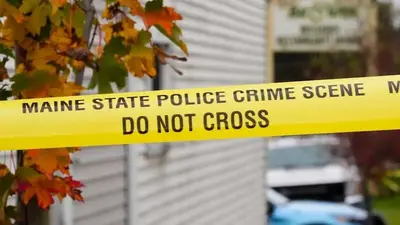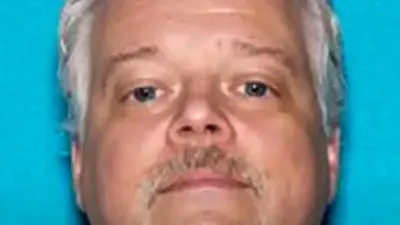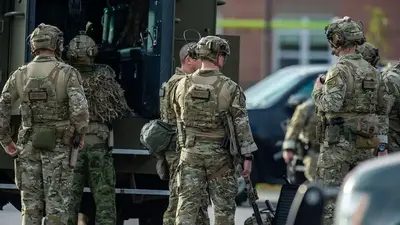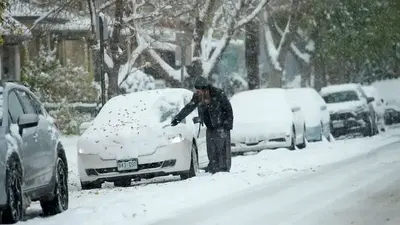US News
University of Washington researchers say their prevention program could reduce gun violence deaths in children
Nearly three decades ago at the age of 17, the unexpected happened to Joseph Sakran after a football game. He was shot by a stray bullet.
“I remember seeing the flashes of light and realizing something quickly was wrong because … I was just soaked in blood,” Sakran said in an interview with ABC News.
Since Sakran’s injury, a growing number of kids have been impacted by gun violence. Sakran, who is now a trauma surgeon and gun control advocate, said there isn’t enough gun control legislation at the national level. But a group of researchers from the University of Washington think their community-based prevention program could help reduce the number of kids who die from gun violence. Their work can be implemented by community members – not lawmakers.
MORE: 'Nightmare': 6 killed in 'calculated' mass shooting at Nashville school

Their research suggests that prevention programs focusing on parent training and after-school programs could reduce youth gun carrying by nearly 30% over one year.
Margaret Kuklinski, a co-author of the research paper, said her group mainly focused on prevention programs in rural communities across seven states. About 24 communities reached out to Kuklinski’s group to be included in the study.
The researchers worked with each community to identify ways they could reduce gun violence. Interventions ranged from alcohol and drug misuse classes to mentorship programs for youth. Each community worked with the researchers to pick one to five measures that addressed its residents’ needs. They used data from students to drive their decisions.
Communities invested about $100 per child every year, and data from the group behind the report suggested an expected return of $11 per dollar invested. The classes took place over four years, and were held at schools and in community centers.
Kuklinski said the program is effective because it keeps kids involved in the community and away from guns.
“This is an approach that goes upstream,” Kuklinski said in an interview with ABC News. “It says that if we can strengthen the conditions in which young people are developing … we can see a range of positive effects.”
The authors of the study followed over 4,000 fifth graders for about eight years. Kuklinski said her team plans to implement a similar prevention program in urban communities.
Sakran said the study results are promising because they were maintained over the long term. He said the group’s approach to gun violence prevention works. Kuklinski added that community work is only one piece of the puzzle to solving gun violence.
Sakran agrees and said that while many state and local gun safety laws have passed, the solution is multifactorial and should include both community and policy-based work.
MORE: Mass school shootings kill 175 from Columbine to Nashville

“If someone comes in with a shot in the head, there's very little that I can do to save that person's life … so you have to prevent those injuries,” Sakran said. “There is never any one solution. Tackling this problem requires a multifaceted approach.”
Many experts, including Sakran, argue that lawmakers on the federal level aren’t doing enough. While Congress passed bipartisan gun legislation last year, gun violence continues to impact many kids. And guns are now the leading cause of death among U.S. children.
Last week, two Black Tennessee legislators were ousted over a gun violence protest. Sakran pointed to this incident as evidence that the culture around gun legislation has changed over the years.
Sakran added that gun violence disproportionately affects Black individuals. To address the issue, he believes structural racism and inequities need to be addressed. While there is more work to be done, Sakran said he is hopeful change will come.
“The worst moment in my life also turned out to be the most impactful,” Sakran said. “It allowed me to really be inspired to go into medicine … to give other people the same second chance that I was given.”
Michal Ruprecht is a medical student at Wayne State University School of Medicine and a member of the ABC News Medical Unit.
Danielle Craigg, MD is a senior General Preventive Medicine & Public Health Resident at Renaissance School of Medicine at Stony Brook University and a member of the ABC News Medical Unit.
-

 US News5h ago
US News5h agoClimate Action in Trump 2.0
-

 US News10h ago
US News10h agoWhat Victoria Woodhull’s Presidential Run Can Teach Us About America Today
-

 US News1d ago
US News1d agoThese Races Still Don’t Have a Clear Winner Two Weeks After Election Day
-

 US News1d ago
US News1d agoNYC Issues Drought Warning and Pauses Aqueduct Repairs
-
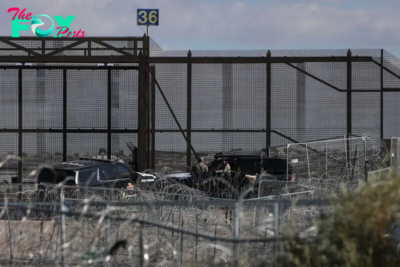
 US News1d ago
US News1d ago‘It’s Going to Take Everyone’: How Immigrant Advocates Are Preparing for Trump’s Return
-

 US News1d ago
US News1d agoLet’s Bring Back Romance
-

 US News5d ago
US News5d agoThe Onion Buys Alex Jones’ Infowars at Auction With Help from Sandy Hook Families
-

 US News6d ago
US News6d agoWhat to Know About Former Rep. Matt Gaetz, Trump’s Pick for Attorney General


